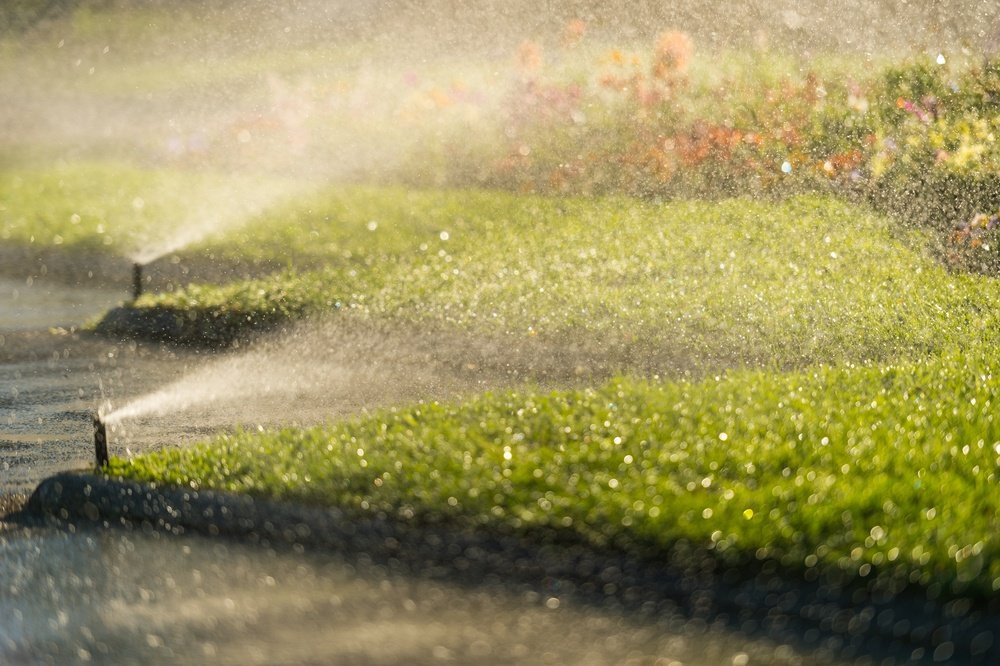What is the Best Time to Run Your Sprinklers?
With springtime comes the new growth and for many homeowners this means tending to yards and lawns. We all want our lawn to look attractive as it compliments the home. Brown or damaged grass looks unsightly.
Watering the lawn keeps it green and lush, but it can also harm your lawn if you don’t do it correctly. You can as easily cause browning and damage to your lawn by watering it improperly as by not watering at all.
So what is the right way to water a lawn?
Climate
The area you live in and the type of grass you have will be the two most important factors.
The overall weather patterns in your area make up the climate. Some climates are dry while others are humid. Some receive intense sunlight while others endure frigid temperatures.
Some types of grass can endure any climate, while others need special care in some climates.
The best option is to go with a lawn using grass native to your area. This is because native grasses are acclimated to the long term patterns of weather in the locale, which means the lawn will need minimal watering, or will survive on natural rainfall.
Saturation
How saturated is the soil in your yard? This will help determine how much watering you need to do. The soil should be moist enough that you can stick a screwdriver in it easily.
The soil’s saturation is important because grass, like all plants, has roots. Healthy grass has deep roots that extend about 6 inches into the ground, while unhealthy grass has shallow roots.
However, soil that is oversaturated can also be a problem, as it creates runoff and can harm your lawn, as well as your water bill.
Type of Sprinklers
Some people have in-ground sprinklers while others use a hose and attachment. Both come with benefits and drawbacks.
In-ground sprinklers usually run on a timer, so most people just set them and forget them. Diligence is still required with automatic sprinklers, however, because the sprinkler heads change position over time, and could water the street instead of the lawn. They can also become clogged or oversaturate your yard.
Hose attachments may be a little extra work but it’s harder to avoid being diligent with them. In general, rotating, pulsating attachments are best because they shoot water sideways, covering a large area quickly and evenly.
Oscillating attachments are better for new grass, but since they shoot water straight up, they cover less area and need to be moved more frequently. For new grass, this is ideal because it helps the grass root more effectively.

The Right Time to Water
While watering at the right time is important, all the other factors must be tended to in order to get the most efficient use of your water. The right time to water also varies depending on your climate and your local water usage restrictions.
Ideally, watering around dawn is the best time. There is little heat to evaporate the water and little wind to blow it away. Watering too late in the day could invite fungus.
A lawn in a cold climate won’t need as much water, especially if there is snow most of the winter, as the water will add to the freeze rather than saturate your soil. Most of the watering will be done during the summer.
Drier climates may require more water than humid climates. Areas subject to drought might have restrictions on water usage. Check with your city or county to see if this applies to you.
How Much Water?
The average amount of water required by most lawns in temperate climates is about 1-1 ½ inches a week. You can put a cup or other measuring device in the yard while watering to check your water levels. However, this is a guideline, not a hard and fast rule.
If your lawn is not getting enough water, the grass will look discolored, and will not spring back up when stepped on. This may happen because you are watering too quickly, not giving all the water time to absorb. This can also be because of the type of grass you have.
Lawns that are oversaturated present problems because the roots don’t grow very deep, causing them to get thirsty very quickly. Signs of oversaturation include runoff (when the water overflows from your lawn) and mushroom growth. Check first for dryness, however, because watering too quickly will seem like runoff when more even distribution will create absorption.
Having a beautiful lawn is not complicated. It only requires that you pay attention to a few things a couple of times a week. This little bit of diligence can give you a healthy lawn through all seasons and for years to come!


